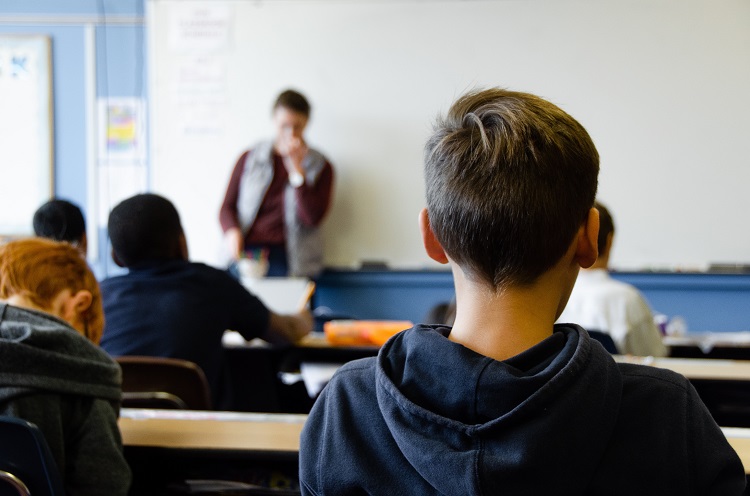
Improve speech and language skills with experienced speech therapists in Long Island! Our private speech therapy services offer personalized, evidence-based treatments for all ages and needs.

Improve speech and language skills with experienced speech therapists in Long Island! Our private speech therapy services offer personalized, evidence-based treatments for all ages and needs.

Download our Free How to Get a Dyslexia Diagnosis for Your Child pamphlet here.
 Dyslexia is one of the most common learning disabilities in children and adults. It affects 20 percent of the population and accounts for 80 to 90 percent of those with learning disabilities. As with all learning disabilities, early detection and intervention are crucial. Particularly in stemming further learning difficulties in later life. If you’re worried that your child may have dyslexia, below is a guide on what signs to look out for and how to get a dyslexia diagnosis.
Dyslexia is one of the most common learning disabilities in children and adults. It affects 20 percent of the population and accounts for 80 to 90 percent of those with learning disabilities. As with all learning disabilities, early detection and intervention are crucial. Particularly in stemming further learning difficulties in later life. If you’re worried that your child may have dyslexia, below is a guide on what signs to look out for and how to get a dyslexia diagnosis.
Discover how you can explain ADHD in a way that’s easy for the child to understand, and accurately represents their amazing brain. Check out this Handout: Kid-Friendly Assessment Summary to help kids understand their amazing brains.
The International Dyslexia Association defines dyslexia as a specific and unexpected learning disability that is neurobiological in origin. Individuals with dyslexia primarily have difficulty in phonological processing. Phonology is an underlying skill that facilitates both learning how to decode and spell. Students with dyslexia struggle with isolating the sounds in words, matching sounds with letters, and blending sounds into words. The visual magnocellular system is responsible for timing visual events when reading. In dyslexics, the development of the visual magnocellular system is impaired: development of the magnocellular layers of the dyslexic lateral geniculate nucleus (LGN) is abnormal; their motion sensitivity is reduced; many dyslexics show unsteady binocular fixation; hence poor visual localization, particularly on the left side (left neglect). However, this visual phenomenon does not explain dyslexia.
In other words, these students have problems “cracking the code.” This means arbitrary written symbols (called orthography) are not automatically processed as well as their peers who have cracked the code with more automaticity do. As a result, an individual with dyslexia will find it difficult to sound out words and show poor spelling and decoding abilities.
When left unaddressed, dyslexia can also lead to problems in reading fluency. If you aren’t reading fluently, you will be at risk for having reading comprehension difficulties and will most likely avoid reading since it’s an unpleasant experience. Lack of practice reading means less exposure to vocabulary and reduced learning background knowledge. In short, without proper intervention, dyslexia leads to a foundational literacy issue, which then causes downstream issues.
For the most part, however, what exactly causes dyslexia is still unknown. We do know there is a genetic link; studies show that children with a family history of dyslexia or other learning disabilities are more susceptible. There are also other risk factors to consider, such as low birth weight, premature birth, and exposure to harmful substances (drugs, nicotine, alcohol) during pregnancy.
Get insights into supporting students with disabilities resulting from dyslexia, dysgraphia, and dyscalculia through comprehensive Q&A by NY State Education Dept.
Read about these exciting advances in the endless debate over traditional reading instructional methods- Our Choice: Rapidly Translate, Evaluate and Adopt Innovative Literacy Methods or Prolong the Reading Wars by Bruce Howlett with Caitlin S. Howlett, Ph.D.
Dyslexia can occur at all levels of intelligence. Children who struggle with dyslexia can often excel in other areas of learning and creative thinking. This is arguably one of the reasons why early signs of dyslexia are easy to overlook, especially in bright students. These students can easily compensate for this sometimes “invisible” learning disability, which makes knowing when and how to get a dyslexia diagnosis all the more necessary.
Typically, dyslexia is detected once a child enters school and starts learning to read. But younger children may also show symptoms that hint at a learning problem. Here are some early signs of dyslexia in children and teens to watch out for from The Mayo Clinic:
Early/Pre-School Years
Elementary Years
Teens and Adults
If you think your child might have dyslexia, read this article to learn more.

Dyslexia becomes easier to spot once a child enters kindergarten or first grade. This is because children with dyslexia often struggle with understanding basic reading skills, so they will noticeably fall behind their peers.
Your child’s primary teacher will hopefully notify you if he or she is falling behind reading benchmarks. They may suggest an assessment and offer assistance on how to get a dyslexia diagnosis for your child. Discover what dyslexia assessment is and how it can help students with dyslexia and other processing disorder to catch up to grade-level literacy skills.
However, school districts and schools use their own metrics to determine what’s expected in terms of learning literacy. What parents don’t know is that many of these popular metrics are not researched-backed (This is another topic to be discussed at a later point). It is currently thought that developmental dyslexia can be viewed as the result of the effects of single deficits or multiple deficits.
A licensed clinical psychologist (ideally, a neuropsychologist) performs the testing for dyslexia on a child. Likewise, a licensed clinical psychologist can also work with a licensed speech language therapist, who can also collect necessary and relevant data (see below). Meanwhile, an occupational therapist can evaluate fine motor and visual spatial skills.
According to the International Dyslexia Association, dyslexia evaluation should consider the following factors:
Moreover, a child or adult should undergo a neuropsychological evaluation to get a closer look at brain functions. This type of test can measure attention span, memory, and language skills. It can help determine the reasons a child is struggling in school and help you plan an intervention. And like any type of learning issue, clinical psychologists can also rule in or out co-morbity since many learning issues are not “pure” in nature.
When left unchecked, dyslexia and other learning disabilities can persist well into adulthood. Without any support, children with dyslexia can experience frustration and learning blocks that may ultimately hamper their learning growth and development. Changing how dyslexia is diagnosed could help many more children learn to read. Learn why so many dyslexia diagnoses are often missed by too many schools.
In many cases, not knowing how to get a dyslexia diagnosis and ignoring the signs of learning disabilities can lead to moodiness and chronic stress, expose children as targets for bullying, and take a toll on the child’s self-esteem. These outcomes may worsen as a child gets older and cause further mental, academic, and career-related problems.
Having a formal evaluation and diagnosis also allows your child to qualify for their school’s special services and Individualized Education Program or IEP. In the United States, all students are eligible for IEPs. Entering your child into a specialized program gives you access to accommodations and modifications in your child’s academic path and goals.
Modifications make changes to what your child is taught in school and adjust expectations in what he is supposed to achieve. An example of this would be giving a different set of homework or grading using a different standard. Modifications are made on the child’s IEP.
Meanwhile, accommodations are steps taken by the school to allow children with dyslexia to keep pace with their peers. This may include:
Finding out how to get a dyslexia diagnosis is only the first step in providing support for your child. Hence, your next goal should focus on finding out the best and most effective way for your child to learn.
But before anything else, it is important to understand that dyslexia is neither a disease nor a physical condition. It is a lifelong learning disability, which a timely diagnosis and the right intervention and teaching approach can successfully manage and correct.
Because dyslexia affects not only a child’s ability to read but also write and spell, it requires a multisensory structured language education (MSLE) approach.
One of the pioneers of this type of teaching method is the Orton-Gillingham approach. Its goal is to create a multisensory learning environment for individuals struggling with reading, writing, spelling, or a combination of all three. The Orton-Gillingham Approach uses sight, hearing, touch, and awareness of motion to assist the child in improving reading and other literacy skills.

While schools play a big role in a child’s success over dyslexia, at-home learning and support are just as important. Some of the most important steps you can take as a parent are:
Staying on top of your child’s IEP. Knowing how to get a dyslexia diagnosis and making sure your child receives a school’s IEP is crucial. But your job doesn’t stop there. It is just as important to keep communication lines open with your child’s educators. This is key to ensure the student is making progress and to figure out how you may be able to provide more help.
Reading with your child as often and as consistently as possible. It may be a challenge to get children to hunker down and finish a book, so pick fun reading materials like comic books, graphic novels, or choose-your-own-adventure books that make reading less of a chore. Emphasize on teaching phonics, and allow your child to practice reading without the pressure of being criticized or graded.
Taking advantage of technology. These days, there is an app or software for everything. Including dyslexia learning needs. Think text-to-speech, reading assistant apps, and spell-checkers.
Seeking the help of professionals. Finding a professional with Orton-Gillingham training (at least 40 hours worth), or even a speech-language pathologist with training in literacy, is the best way to provide further support for your child. For your child to succeed, it’s crucial to work with a professional that has a keen understanding of his or her needs and delivers a custom teaching approach.
Brooklyn Letters is a New York-based private speech-language therapy and tutoring company fully committed to providing fun, individualized, and dynamic tutoring, coaching, and therapy sessions for children and teens. We treat all kinds of speech and language delays and learning difficulties, specializing in evaluating and treating babies through adolescents.
Our services include:
Here is a roundtable NYC discussion on dyslexia presented by a neuropsychologist, an educational attorney, a special needs advocate, and a head of a school specializing in teaching dyslexia.
Phone: (347) -394-3485
Text: (917) 426-8880
Email: [email protected]
Our Tutors are Ready to help you!

Hearing your child talk for the first time is one of the most magical moments of parenthood.

As the Covid-19 pandemic continues to change the way today’s students learn,
Our speech therapy staff travels to your home throughout Brooklyn, including Bay Ridge, Dyker Heights, Fort Green